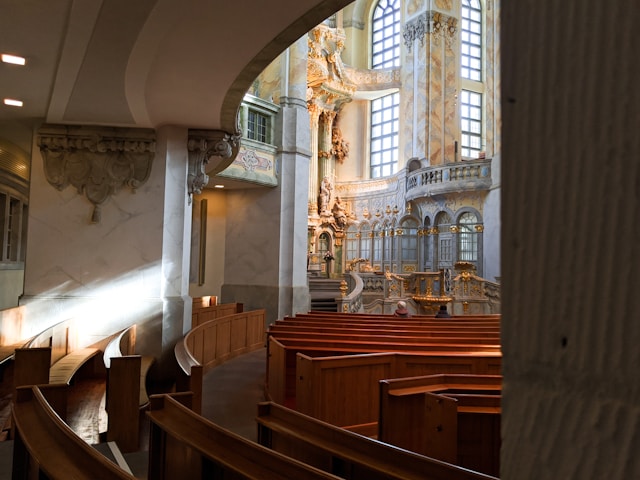Your cart is currently empty!
Regina Mundi: Unveiling the Queen of the World

Introduction
Regina Mundi, a Latin phrase that translates to “Queen of the World,” holds a significant place in Catholic tradition, representing the Virgin Mary’s exalted status and her role as the intercessor and protectress of humanity. This blog post delves into the multifaceted aspects of Regina Mundi, exploring its origins, iconography, and the profound impact it has had on Christian spirituality.
Historical Origins
II.a. Ancient Roots
The concept of Mary as Queen has ancient roots, reaching back to the Old Testament. In the Book of Esther, Queen Esther’s story serves as a prefiguration of Mary’s intercessory role. She bravely approached King Xerxes to plead for the lives of her people, mirroring Mary’s role as a mediator between God and humankind.
II.b. Medieval Development
During the Middle Ages, the devotion to Regina Mundi flourished. St. Bernard of Clairvaux was instrumental in promoting this devotion, emphasizing Mary’s Queenship as a reflection of her unique grace and her role as the spiritual Mother of the Church.
Iconography of Regina Mundi
III.a. Paintings and Mosaics
Artistic representations of Regina Mundi have captured the hearts and minds of believers for centuries. In paintings and mosaics, Mary is often depicted seated on a throne, adorned with a crown and scepter. She holds the Christ Child in her arms, symbolizing her role as the Mother of God.
III.b. Statues
Statues of Regina Mundi are also common in Catholic churches and shrines. These statues range from small and delicate to grand and imposing, reflecting the diverse cultural traditions and artistic styles.
Mary’s Queenship in Catholic Theology
The doctrine of Mary’s Queenship is rooted in her unique relationship with God and humanity. As the Theotokos, the Mother of God, Mary’s status is elevated above all other creatures. Her assumption into heaven completes her Queenship, symbolizing her victory over sin and death.
Devotions to Regina Mundi
IV.a. Litany of the Blessed Virgin Mary
The Litany of the Blessed Virgin Mary includes the invocation “Regina Mundi, ora pro nobis” (“Queen of the World, pray for us”), acknowledging Mary’s intercessory role and her power to mediate graces from God.
IV.b. Rosary Prayer
The Rosary, a popular Catholic devotion, includes several prayers to Regina Mundi, such as “Holy Mary, Queen of Heaven and Earth” and “Hail, Holy Queen.”
Role in Christian Spirituality
- Mediatrix of Grace: Mary is believed to be the channel through which God’s graces are dispensed to the world.
- Intercessor: As Queen, Mary acts as an intercessor between humanity and God, pleading for their needs and forgiveness.
- Model of Faith and Holiness: Mary’s life and virtues serve as an example for Christians to strive for holiness and unwavering faith.
Contemporary Relevance
V.a. Feminism and Mary’s Queenship
In recent years, there has been a growing interest in exploring Mary’s Queenship from a feminist perspective. Some feminists see Mary as a symbol of empowerment and leadership, highlighting her strength and agency as a woman.
V.b. Ecumenical Dialogue
Mary’s Queenship has also played a role in ecumenical dialogue, as it is a belief shared by various Christian traditions, including the Catholic, Orthodox, and some Protestant denominations.
Conclusion
Regina Mundi, Queen of the World, remains a powerful and enduring symbol in Catholic spirituality. Through her Queenship, Mary serves as an intercessor, a model of virtue, and a reminder of humanity’s hope for salvation. Understanding and embracing the multifaceted nature of Regina Mundi enriches our appreciation of the Virgin Mary’s role in Christianity and inspires us to strive for holiness in our own lives.